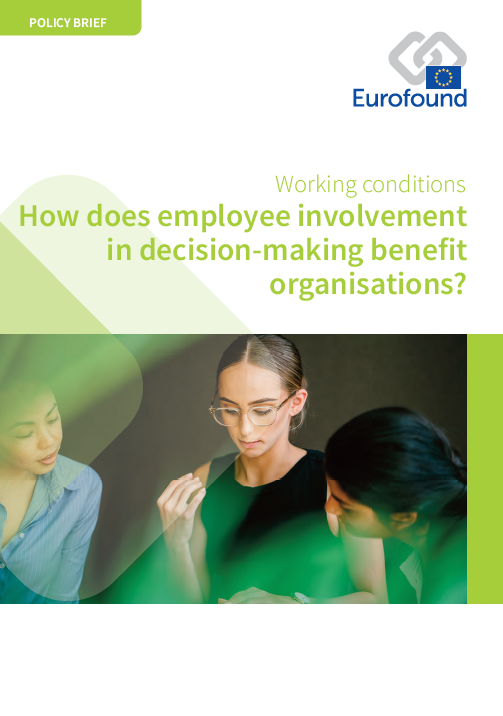
Wie schaffen es Unternehmen, ihre Mitarbeiter zu Höchstleistungen anzuspornen? Die Forschung zum Thema Personalwirtschaft hat herausgefunden, dass einer der Schlüssel zum Erfolg die Beteiligung der Arbeitnehmer ist, d. h. Arbeitnehmer werden in die Lage versetzt, Entscheidungen über ihre eigene Arbeit zu treffen und an der Entscheidungsfindung im Unternehmen mitzuwirken. Bei einem hohen Grad an Arbeitnehmerbeteiligung entsteht ein Arbeitsumfeld, das stark motivierend wirkt und in dem die Entwicklung von Kompetenzen im Vordergrund steht. Und dies ist genau die Art von Arbeitsumfeld, das Unternehmen brauchen, um den Anforderungen an Innovation und Anpassungsfähigkeit an den technologischen Wandel in einer wissensbasierten Wirtschaft gerecht zu werden. In diesem Kurzbericht werden empirische Daten und Fakten näher beleuchtet, wonach es in Betrieben, in denen die Arbeitnehmer intensiv beteiligt werden, eher gelingt, die Leistungsfähigkeit der Beschäftigten zu steigern, als in Betrieben, in denen die Arbeitnehmer weniger eingebunden werden. Untersucht wird der Einfluss der Arbeitsorganisation auf zwei Faktoren, die zu Leistungsbereitschaft beitragen: berufliches Engagement und Kompetenzentwicklung.
Key findings
In total, 29% of employees in the EU, Norway and the United Kingdom work in forms of work organisation that provide a high level of employee involvement – meaning that employees are able to exercise their own initiative in carrying out tasks and have substantial input, either individually or collectively, in decisions that affect the wider organisation.
Nearly half of employees (47%) working in a high-involvement organisation report a high level of work engagement, almost double the share working in low-involvement organisations (24%). Highly engaged employees demonstrate a more positive orientation towards their work. They are less often absent from work, more likely to put in extra effort, prefer a later retirement age, and report higher levels of well-being.
High-involvement organisation provides more opportunity for both formal and informal skill development, but it is particularly strongly associated with informal skill development. This finding implies that high involvement is most likely to promote the practical expertise that underpins innovative thinking and to increase the capacity of organisations to adapt to changing technological and market environments.
High-involvement organisation has a levelling effect with respect to skill development. Differences in opportunities for skill development between high-skilled and lower-skilled employees are lower in high-involvement organisations.
These findings together suggest that it is particularly important to raise the decision-making latitude of less-skilled workers if employers are to optimise the performance of their workforce as a whole.
Graphs
- Figure 1: Types of work organisation and the proportion of employees who work in each, EU, Norway and the UK, 2015
- Figure 2: Percentage of employees in high- and low-involvement organisations, EU, Norway and the UK, 2015
- Figure 3: Levels of work intensity reported by employees in four organisation types (%)
- Figure 4: Levels of managerial fairness and supportiveness reported by employees in four organisation types (%)
- Figure 5: Levels of work engagement reported by employees in four organisation types (%)
- Figure 6: Effect of high involvement on work engagement by occupational category
- Figure 7: Employee scores on formal and informal skill development indices, by sector
- Figure 8: Employee scores on formal and informal skill development indices, by organisation type
- Figure 9: Factors accounting for occupational differences in informal skill development
- Number of pages
-
24
- Reference nº
-
EF19006
- ISBN
-
978-92-897-2082-3
- Catalogue nº
-
TJ-AR-20-003-DE-N
- DOI
-
10.2806/76621
- Permalink
Cite this publication
Eurofound (2020), Wie kommt die Beteiligung der Arbeitnehmer an der Entscheidungsfindung den Unternehmen zugute?, Europäische Erhebung über die Arbeitsbedingungen, Reihe 2015, Amt für Veröffentlichungen der Europäischen Union, Luxemburg.
